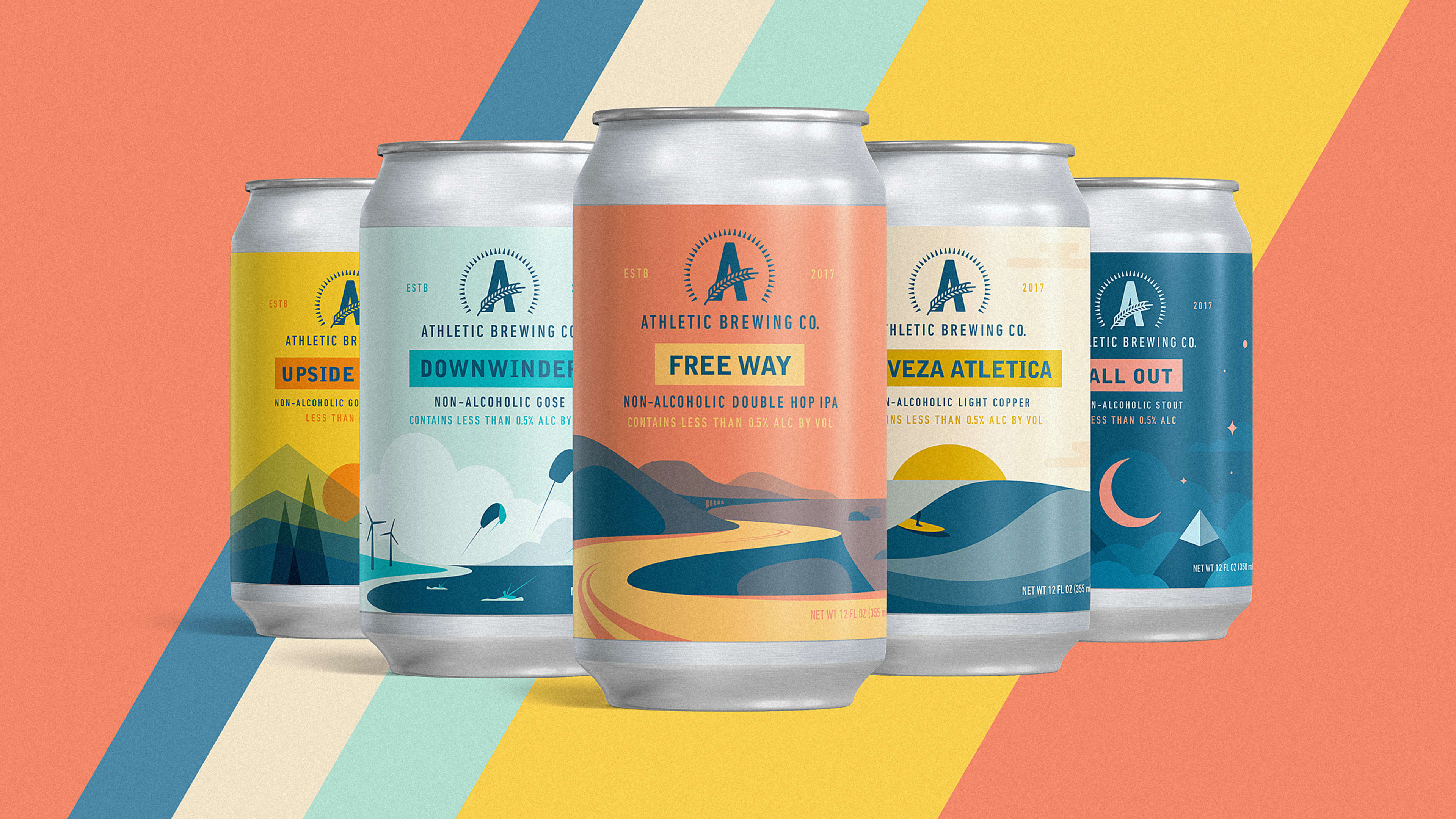This summer, a short year after turning on their fermenters for the first time, Athletic Brewing faced a tough decision. With their current brewery configuration, they couldn’t make enough of their nonalcoholic beer to fill orders. Even their most aggressive forecasts, says founder Bill Shufelt, hadn’t anticipated such high demand for their beer—some 14,000 cases a month. To meet it, they realized, they would have to shut down and install bigger fermenters and tanks.
So they made the call. During the peak of the summer, they went offline—twice, each time for a week—and added new 100-barrel tanks to their Stratford, Connecticut, facility, effectively doubling capacity. And even then, they couldn’t keep up. “We probably could have sold two or three times as much as we did, even with doubling capacity,” says Shufelt.
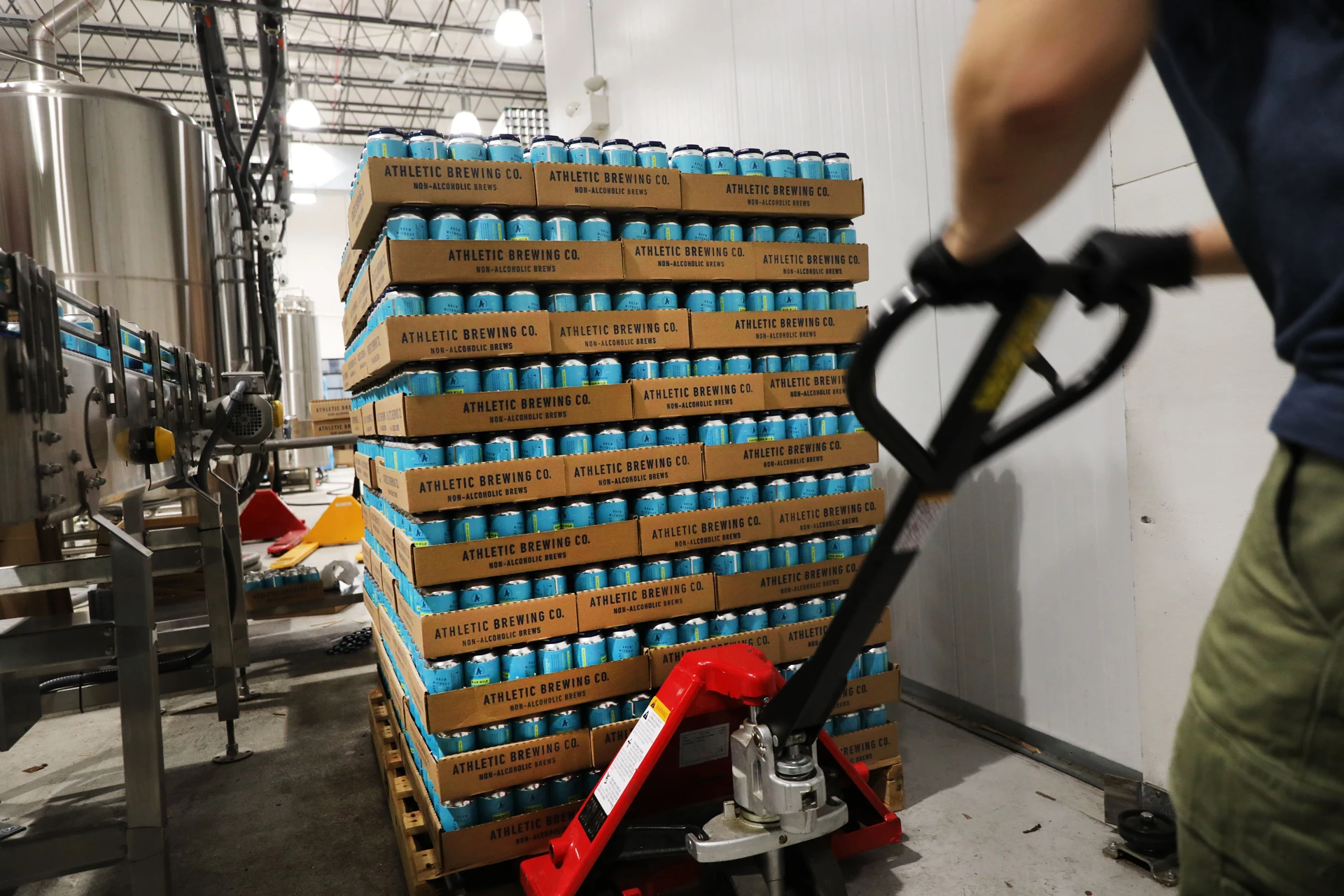
That’s been the story of Athletic Brewing’s epic first year: doing everything it can to meet a white-hot demand for quality nonalcoholic beer that almost no one expected to be a hit. Right now, the brewery is on pace to produce 10,000 barrels this year, says Shufelt. For perspective, few breweries ever reach that output, let alone in the first year of business. In fact, 95% percent of all breweries in the country produce less than 10,000 barrels annually, according to Bart Watson, chief economist with the Brewers Association. “There are some breweries that have been around that mark in the first year,” he says, “but it’s extremely rare and requires a unique combination of being well-capitalized, organized, and really resonating in the marketplace.”
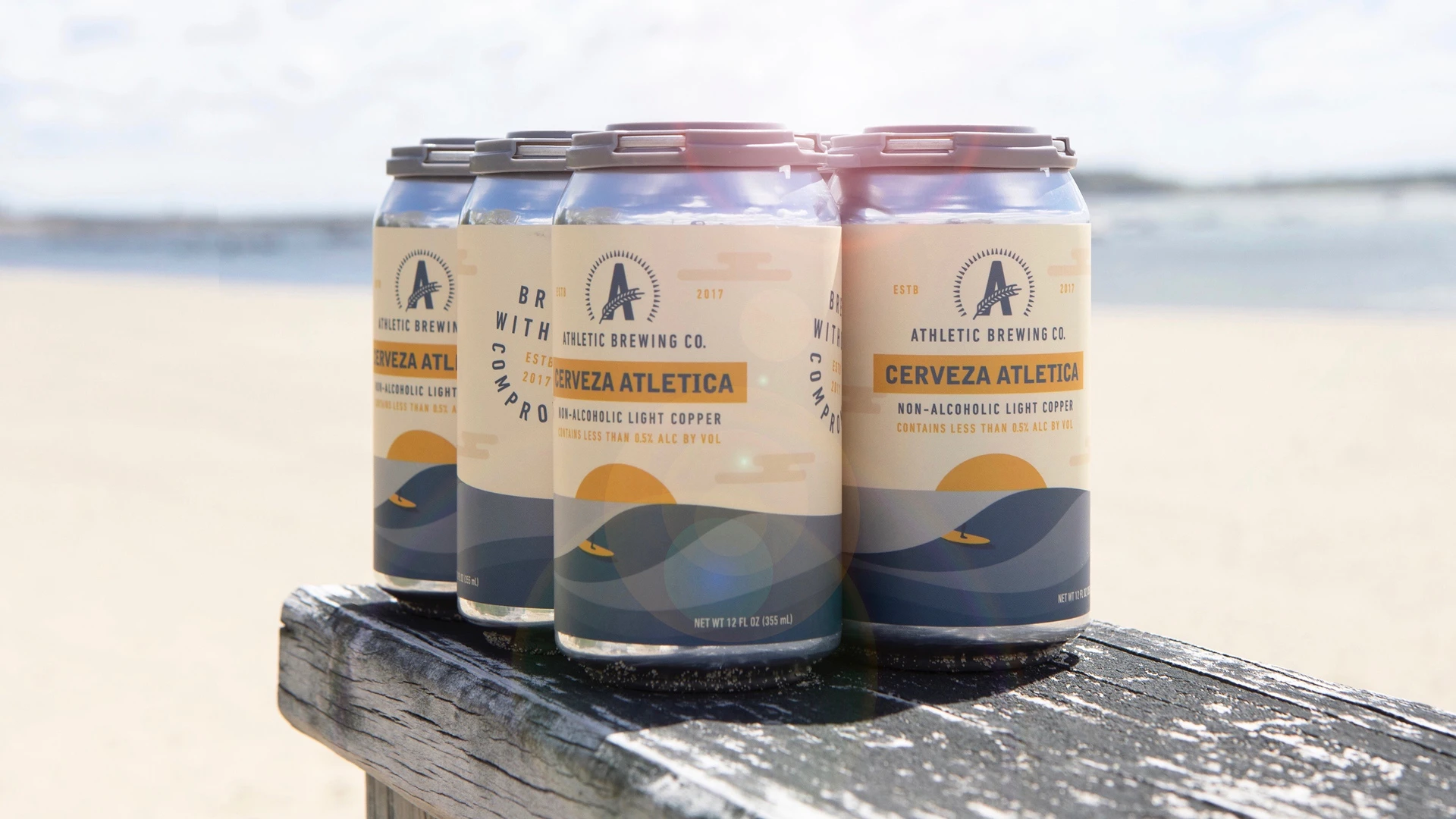
There’s no doubt Athletic is resonating as it taps into the growing trend of alcohol moderation. Musicians from Steven Tyler to Ben Harper are publicly abstaining. Even the hardest-partying chefs known for indulgence and excess are drying out, and “sober bars,” like The Getaway in Brooklyn and Manhattan’s Existing Conditions, are cropping up. There’s evidence that younger drinkers are rethinking their relationships with alcohol entirely. Nearly half of regular wine drinkers, and two-thirds of millennial wine drinkers, report that they’re trying to drink less, primarily for health reasons, according to Nielsen data.
But few people foresaw a year-old nonalcoholic beer brand—a genre traditionally associated with low-quality O’Douls, Becks, and other grocery-store brands—becoming a breakout drink of choice for moderating millennials and weekend warriors.
“I never expected to have to worry, ‘Did we run out of the non-alc beer?,'” says Tedd Kenny, owner of Top Hops Beer Shop, a craft-beer bar and bottle shop on Manhattan’s Lower East Side. Athletic Brewing has been a consistent and unexpected top seller at the popular spot. In June and July, it was the best-selling packaged beer in his store. What’s more, he says Athletic has “expanded the market [beyond] just former drinkers.” He sees customers at his bar switching between NA Athletic beers and alcoholic craft beer in a single evening. In other words, the drinker who wants to moderate while drinking will now order an NA beer.
How did Athletic create this new consumer behavior? It starts with taste. Athletic’s brews stand up to other craft beers. Its Run Wild IPA was the gold medalist in the nonalcoholic category at the 2018 International Beer Challenge, and it was named the USA’s best nonalcoholic beer in the World Beer Awards in 2018.
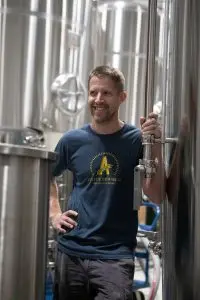
Traditionally, there are two methods to make nonalcoholic beer: vacuum distillation and reverse osmosis. In layman terms, you can either cook off the alcohol in beer after it’s brewed, or you can filter the alcohol out. Both require recarbonation. Early on, Athletic decided neither of these approaches would work. “We think all the traditional methods of brewing nonalcoholic beer don’t do the ingredients justice,” says Shufelt.
It took Shufelt and Walker two years of research and a year of trial-and-error home brewing to develop an entirely new process. Since it’s patent-pending, Shufelt won’t give away too many details, but he claims to have replaced the industrial-strength de-alcoholizing equipment with “a mosaic of different natural elements that we’ve intertwined.” He calls this all-natural approach totally unique: “Everyone looks for a single step answer. It’s really like 12 to 15 changes versus traditional brewing. We only use traditional beer ingredients, water, hops, yeast, and barley, and we just control natural variables at different times.”
Once they got their process down, it was time for the two to find suppliers, but that proved difficult as well. “When we were planning this business, we couldn’t get anyone to talk to us,” says Shufelt. “Even at conferences, no one wanted to talk to us. There was less than zero interest.”
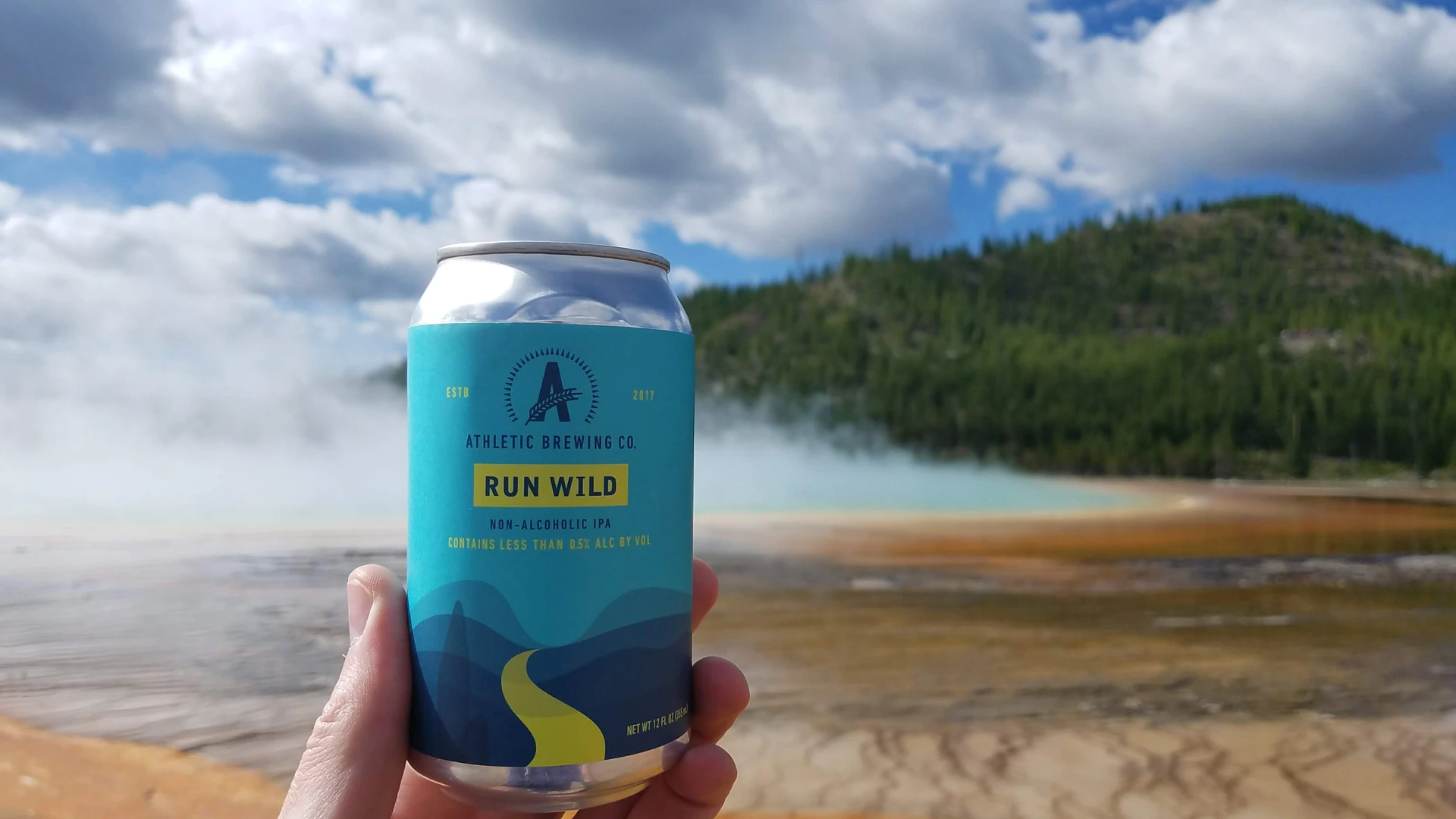
Shufelt eventually convinced a handful of suppliers to take a chance on an unknown brand with a radically different approach to brewing NA beer. He poured his life savings into the business, raised money from a private group of angel investors—and officially launched in May 2018. Today, Athletic makes two flagship products, the Upside Dawn Golden Ale and the Run Wild IPA along with seasonal and limited release offerings like the Cervena Athletica Copper, the All Out Stout, and the Downwinder Gose.
While the brewers here in the States are only just beginning to embrace NA beers, the industry as a whole is looking to places like Germany, where consumption of nonalcoholic beer increased 43 percent from 2011 to 2016, even as overall beer sales declined. The global market for nonalcoholic drinks was $1.5 billion in 2015 and is estimated to reach $2 billion by 2022, according to a report published by Allied Market Research.
These numbers haven’t escaped the notice of the big beer and alcohol brands. British multinational alcohol company Diageo acquired a “nonalcoholic spirits” startup called Seedlip this past August; Pabst launched its first nonalc beer last spring; and Heineken brought its 0.0 nonalcoholic beer stateside this year with a catchy “Bring Your Beer to Work” day campaign that included launch ads with stars from The Office. (There’s also been a rise in so-called functional beers, including the San Francisco-based Sufferfest, which was acquired by Sierra Nevada this year.) NA beers still account for just a small portion—about 0.3%—of the overall beer market, says Watson from the Craft Beer Association. But he notes that NA beers are up 5% (11% by dollar sales) over the last year.
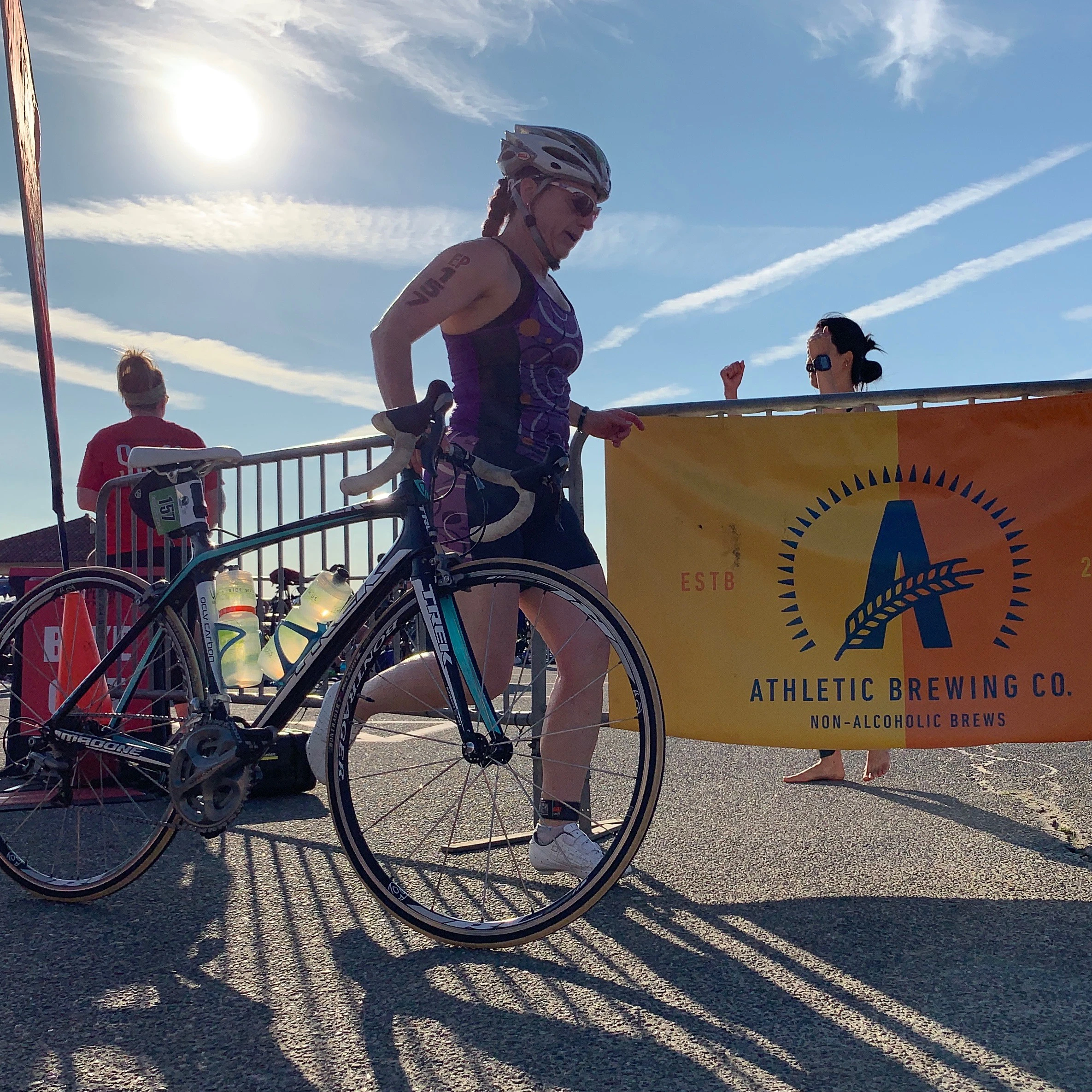
To stand out from the bigger players that are dabbling in NA and the handful of other craft nonalcoholic brewers in the space—such as California’s Bravus Brewery and Missouri’s Well Being Brewery—Athletic has targeted weekend warrior types who want beer but not hangovers. “It’s really a very modern decision to monitor what ingredients you’re consuming and be more mindful during more occasions,” says Shufelt. The brand sponsors AVP Beach Volleyball tournaments, Spartan Races, and other events, including half-marathons. It also organizes group runs and has committed to donating 2% of sales to trail work in parks, which has resulted in almost $50k donated to trail and park cleanups this year. Today, Shufelt describes the Athletic consumer as “young, modern, healthy adults” and says they are “heavily barbelled in the 24 to 44 demo.”

But one of the biggest drivers of Athletic’s explosive growth is its ability to ship its beers directly to customers across the country. Since shipping traditional alcoholic beers directly to customers is prohibited, most new breweries need to lock in various distributors in different states to reach customers—and gain traction. Athletic still courts beer stores, bars, and restaurants, but it can also sell directly through its e-commerce site, making it one of the first direct-to-consumer beer brands.
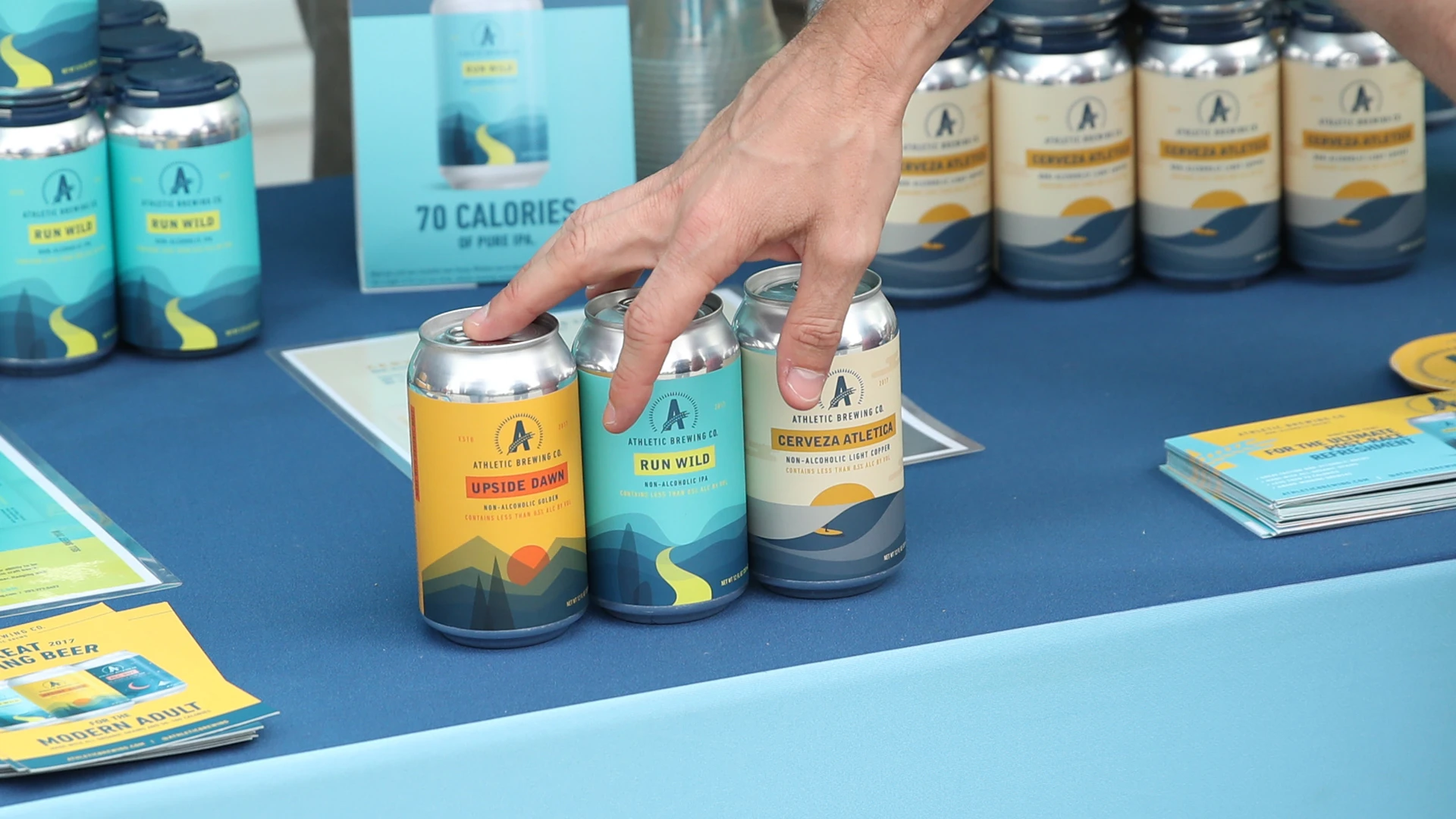
“Half of our business is done through nontraditional channels,” says Shufelt. “No matter how many states we grow to, our e-commerce platform grows right in step.” The demand is so overwhelming that Athletic’s e-commerce shop has been out of stock more than 15 days each of the past three months. “We’re humbled and overwhelmed at how much reaction there has been to the e-commerce business,” says Shufelt. “It grows between 40 to 60 percent each month.”
That online shortage also means Athletic customers are making long pilgrimages to buy beer. Over the summer, customers from Washington, D.C., Tennessee, and Ohio drove all the way to Athletic’s Connecticut taproom to buy their beers. “Ironically, the shortages of nonalcoholic beer out there are very real,” says Shufelt. “It’s a funny thing to say: There’s a real nonalcoholic beer shortage.”
Recognize your brand’s excellence by applying to this year’s Brands That Matter Awards before the early-rate deadline, May 3.
